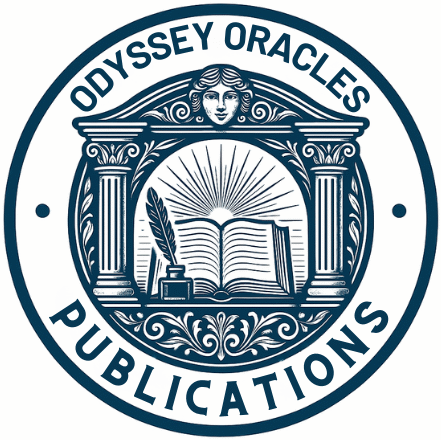Tips For Writing A Compelling Self-Published Book

Understanding Your Audience: The Key to a Successful Book
Knowing who will read your book is crucial in shaping your writing. Think about who you’re reaching out to. What are their age group, interests, and reading habits? Knowing this helps set the stage for relatable content.
Construct a reader persona, a fictional role representing your ideal reader. This involves picturing their likes, dislikes, and lifestyle habits, which can steer your writing decisions.
If you’re still questioning why this matters, consider this: a well-defined audience makes your writing resonate deeply, fosters loyalty, and enhances credibility.
Utilizing tools like surveys or engaging with communities via social media can shed light on what potential readers want. This feedback is genuinely your secret weapon for success.
Crafting a Unique and Compelling Narrative
Originality gives your book that wow factor. Readers are constantly on the lookout for something different to capture their interest. Creating a narrative that’s uniquely yours ensures your work stands out in a crowded market.
Finding your voice is essential. It’s what makes your writing distinct. If you’re wondering how to do it, think about what makes you tick. Your perspective and style will naturally develop from your experiences and passions.
Creating characters and plots that resonate with readers can strike a perfect balance between creativity and structure. Aim for characters that are relatable. This means understanding their motivations, fears, and arcs. The same goes for plot development—structure it in a way that keeps readers guessing.
Including your personal experiences adds authenticity. It doesn’t mean your book becomes autobiographical, but threading in elements from your own life can bring depth and relatability to your narrative. It lets readers connect with your story on a more personal level, which is both powerful and memorable.
Research and Fact-Checking: Building Trust with Your Readers
Accuracy isn’t just a nice-to-have, it’s essential in building credibility. Whether crafting fiction or documenting a non-fiction story, a firm grip on facts enhances the reader’s trust and immersion.
Effective research can be a game-changer. Think libraries, academic journals, online databases, and expert interviews. They offer invaluable insights and details that add depth to your narrative.
Fact-checking can’t be overlooked. Double-check your sources to maintain integrity and prevent misinformation from slipping through the cracks. The last thing you want is readers questioning your reliability.
Bringing in expert opinions or quoting authoritative sources adds weight to your claims. It bolsters your book’s authenticity, making it a richer and more engaging read.
Writing Rich, Emotional, and Readable Content
Striking a balance between readability and complexity keeps your work accessible to a broad audience while still engaging them. Keep your language clear and fluid, but don’t avoid incorporating more intricate ideas when they serve a purpose.
Evoking emotion is a cornerstone of memorable writing. Stirring the readers’ feelings can bridge the gap between your story and their reality. Use descriptive language that appeals to the senses to bring scenes and characters to life.
Maintaining a conversational tone helps keep readers engaged. It’s like chatting with a friend over coffee; it should feel natural and relaxed. Your voice should guide them, not overwhelm them.
Incorporating anecdotes or real-life examples connects your readers to the material on a personal level. It transforms abstract concepts into relatable experiences, deepening their emotional investment in your book.
Mastering the Art of Editing and Proofreading
Editing isn’t just tidying up sentences, it’s a vital step in perfecting your narrative. A polished manuscript gives your book the professionalism it deserves.
Different types of editing play distinct roles in refining your work. Developmental editing focuses on the big picture, ensuring your story arc and character development hit the mark. Substantive editing emphasizes structure and content flow, while copyediting sharpens grammar and style.
Proofreading is your final safeguard against pesky errors. It ensures your text is free from grammatical mishaps and punctuation blunders that might distract your readers.
Even though self-editing is essential, the fresh eyes of a professional editor could be a valuable investment. They can provide an impartial perspective, offering insights you might have missed after staring at the same pages for hours.
Designing an Eye-Catching Book Cover and Interior
Your book’s cover is the first impression. A compelling cover can captivate potential readers, inviting them to explore what lies within those pages. It’s about catching the eye at first glance.
Interior design matters just as much. A well-formatted book enhances the reading experience and improves accessibility. Layout plays a crucial role in guiding readers effortlessly through your content.
Choosing the right fonts and layouts directly affects readability. They should complement the tone of your book while ensuring clarity. Avoid overwhelming designs; simplicity often speaks louder.
On a budget? Collaborate with a professional designer who can bring your vision to life without breaking the bank. Many talented individuals offer affordable services tailored to indie authors like yourself.
Strategies for Effective Marketing and Distribution
Crafting a strong, unique selling proposition helps your book stand out. Digging into what makes your book distinct will help capture potential readers’ attention.
Social media and digital platforms are your best friends when it comes to promotion. To spark interest, engage with readers, post teasers, and share insights about your writing journey.
Building an email list is a smart move for fostering reader relationships. Regular updates and exclusive content can keep your audience engaged and eager for more.
Deciding between print and digital formats depends on your distribution strategy. Each has unique benefits, and understanding your reader’s preferences can lead to more effective targeting.
Evaluating Success and Planning for Future Projects
Setting realistic expectations for your self-published book is crucial. Success looks different for everyone, so define what it means to you: sales numbers, reader reach, or personal satisfaction.
Gathering reader feedback offers valuable insights and areas for improvement. Engage with your audience through reviews and direct interactions to understand what worked and what didn’t.
Analyzing sales and engagement metrics provides a clearer picture of your book’s performance. Use these insights to guide future decisions and refine your approach for the next project.
Planning your next book becomes smoother once you’ve learned from past experiences. Take note of lessons learned and adjust your strategies to continue evolving as a writer.






